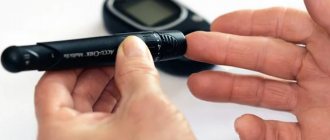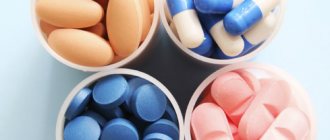Few people know that ordinary table salt contains not only chlorine and sodium, but also many other useful elements. We use salt in the cooking process not only as a food additive to give a delicious taste to a dish. Table salt is very important for the formation of hydrochloric acid and alkali, which allow the gastrointestinal tract and cells to function normally.
Hypertonic solution of table salt is very famous in everyday life, because it can be used as a remedy.
What properties does hypertonic salt solution have?
Hypertonic saline solution is a liquid that has a sodium chloride concentration of more than 0.9% and is an official medicine. The solution can be prepared at home.
If all recommendations are followed, it retains the same properties as the finished pharmaceutical drug:
- Ability to heal wounds.
- Antimicrobial protection - removal of viruses and bacteria from the body, as well as inhibition of their development.
- Improvement of the digestive tract.
- Removing swelling of tissues and affected areas.
- Elimination of the inflammatory process.
The action of the solution is based on simple physical processes occurring in the body. It is known that each cell of the body contains liquid, the concentration of which is 0.9%. If it is violated, a destructive process may begin that has irreversible consequences.
When a hypertonic solution enters the body, due to its higher concentration of sodium chloride, it draws liquid with dangerous substances (toxins, viruses, bacteria, etc.) from diseased cells, which provoke the development of inflammatory and other processes.
Saline dressing
For maximum effect, saline solution is applied to the wound as a dressing. The procedure is performed in the following sequence:
- The solution itself is prepared - the salt is poured with warm water and thoroughly mixed until completely dissolved.
- Preparation of a piece of bandage - a bandage or gauze (depending on the size of the wound) is folded into 8-9 layers, and then immersed in saline until completely saturated.
- Preparing the wound - While the salt dressing is soaking in the solution, carefully remove the old dressing from the wound. If the bandage has dried out, it should be moistened with warm water or the same saline solution, generously moistening the entire surface to be glued.
Salt dressing
Saline dressings can be combined
Apply a bandage soaked in saline solution to the open wound. Its edges are carefully straightened and smoothed to ensure maximum contact with the surface of the wound. In this position, you need to let the solution drain well, and then apply a bandage to it.
The wound site may remain wet for a while and then dry out. At this time, it is advisable to leave the wound alone and move less.
The duration of the procedure is selected individually and averages 5-6 hours. This is enough to remove all pathogens, dead cells and pus from the wound.
Saline dressings can be combined with drugs that promote wound healing. Thus, the effect of treatment will be several times greater. The choice of a particular drug depends on the type of wound, depth and individual characteristics of the body.
For convenience, the dressing should be applied by a medical professional or family member, as this is not always convenient when the wounds are in hard-to-reach places.
Indications for use
Saline solution is prescribed for use in the following cases:
- ARVI.
- Purulent wounds and burns.
- Insect bites.
- Frostbite.
- Inflammatory processes of the oral and nasal cavities, as well as internal organs.
- Profuse internal and external bleeding.
- Gynecological diseases.
- Severe headaches (including migraines).
- Constipation.
- Severe dehydration.
- Thyroid gland dysfunction.
- Joint diseases.
- Kidney failure and problems with urine excretion.
- Conditions in which a deficiency of chlorine and sodium ions occurs (poisoning, swelling of brain cells, etc.).
- Diseases of the respiratory system.
Saline solution is also used in cosmetology. It shows high effectiveness for problems with hair loss and skin rashes.
Before using the product, regardless of the purpose, it is recommended to consult your doctor or cosmetologist to avoid negative effects on health.
Excess exudate
If there are no crusts or necrosis in the wound, then the technique of local negative pressure can be used for active outflow of exudate. For these purposes, the PICO wound treatment device is used, which creates a constant outflow of purulent exudate from the wound, which is accompanied by a decrease in tissue swelling, a decrease in the number of bacteria in the wound, as a result, the inflammatory reaction subsides, and the growth of new tissues begins, the vessels that fill the wound begin the epithelium grows, the edges of the wound gradually come closer together and the wound heals. When using this device, there is no need to carry out dressings daily. It is enough to change the dressings on average once every three days.
For passive drainage of exudate from the wound, absorbent dressings of your choice are used:
- Carbonet. This multi-layer dressing perfectly absorbs viscous purulent exudate, and, thanks to a layer of activated carbon, absorbs the odor that often accompanies purulent wounds. Since Carbonet does not contain antimicrobial components, dressings on purulent wounds must be changed daily.
- NEOFIX polyurethane sponge dressings with silver - NEOFIX FibroSorb AG and NEOFIX FibroSorb AG Sacrum. Silver in dressings provides antimicrobial effect.
Sponge dressings absorb liquid exudate and retain it in their structure even under pressure, for example, under compression bandages or underwear (stockings, stockings, tights), which are one of the main attributes of the treatment of trophic venous ulcers. NEOFIX FibroSorb AG sponge dressing
without adhesive edge is indicated for wounds where the skin around which is damaged.
Such a bandage requires additional fixation with a bandage or adhesive roll bandages NEOFIX ROLL, or OpSite Flexifix, always only around the perimeter, without covering its central part with adhesive patches. This is necessary to prevent maceration of the skin and wound. NEOFIX FibroSorb AG Sacrum bandage
with a sticky edge, specially shaped for fixation in the sacrum area, while the skin around the wound should be dry and healthy, without any disturbances. The bandage protects the wound from the ingress of urine, feces, as well as from the penetration of external liquids during hygiene procedures.
When using NEOFIX FibroSorb AG and NEOFIX FibroSorb AG Sacrum dressings for wound treatment, there is no need to change dressings daily. It is recommended to change the dressing once every 2-3 days, depending on the degree of filling of the dressing with exudate.
Contraindications
With a wide range of effects, saline solution in some cases can cause harm to the body.
Its use should be avoided if:
- Having an allergy to the substance.
- Certain types of internal bleeding (for example, pulmonary).
- Sclerosis of cerebral vessels.
- Presence of stones in the kidneys and gall bladder.
- Volvulus.
- Open ulcer of the digestive tract.
- The presence of scars and adhesions.
- Hernia.
- Heart diseases (ischemia, defect).
The saline solution is used with extreme caution in cases of high blood pressure, renal failure, and in cases of water and electrolyte imbalance in the body. When using a pharmaceutical solution, you must familiarize yourself with the possible contraindications that are indicated in the instructions.
Possible dangers of nasal rinsing
Despite the apparent versatility and accessibility of this method, it has certain contraindications. Rinsing the nose with saline solution should not be carried out if a person has:
- deviated nasal septum;
- polyps, cysts and other formations in the nose and nasopharynx;
- tendency to frequent nosebleeds;
- allergies to certain components of the washing liquid;
- inflammatory process in the nasopharynx.
In the latter case, rinsing the nose at home is not only ineffective, but even a dangerous method of treatment. The structure of our ENT organs is such that they are interconnected, and if the manipulation is carried out incorrectly, the infection can spread, for example, from the maxillary sinuses to the ear and cause severe inflammation in it. As we see, home conditions are not always conducive to safe medical procedures. Therefore, at the slightest suspicion of inflammation in the nasopharynx, immediately contact an otolaryngologist.
Preparation of a classic solution
Hypertonic salt solution (it can be prepared at home with only 2 components) is prepared simply and does not require a lot of time and money.
But to obtain effectiveness, it is necessary to follow all recommendations for the selection and preparation of components and the immediate preparation procedure.
It is worth noting that the self-prepared solution is used only externally. For intravenous administration, special sterile solutions are used, sold in pharmacies.
Preparing the Components
To prepare the solution, it is recommended to use distilled water, since it does not contain any impurities. If there is no such liquid, it can be replaced with boiled water - it will contain a minimal amount of dissolved salts.
It is recommended to pre-cool the water to 35 0C. Salt must be used regular or sea salt without additives in the form of iodine and other trace elements.
Step-by-step cooking process
Preparation of a saline solution includes the following steps:
- 90 g of salt must be added to prepared water (1 l).
Hypertonic salt solution - to prepare you need to add 90 g of salt to 1 liter of water. - The resulting mixture must be stirred vigorously until the salt is completely dissolved. If it does not dissolve, the solution can be warmed up a little.
- The prepared solution must be poured into a clean container and used for its intended purpose.
You can store the prepared product for no more than a day in an airtight glass container. In some sources, there is an option for preparing a solution in which salt is added to the water immediately after boiling.
You can also use this method - the temperature of the water in which the salt is dissolved does not matter. The main thing is to use the solution only after the liquid has cooled. The optimal temperature will be no higher than 36 0C.
Healing properties for treating wounds
The high effectiveness of saline solution is due to a fairly wide pharmacological spectrum:
- Adsorbent - salt particles retain water, oil and foreign particles, and then bring them to the surface of the wound. This allows you to heal even the deepest wounds, while all the contents of the wound will be extracted. Syringes can be used to conveniently treat deep wounds.
- Disinfection - in a salt environment, all pathogenic microorganisms die, because salt disrupts all metabolic processes, which leads to their death. Saline solution can also compete with other disinfectants.
- Anti-inflammatory and anti-edematous effect - salt removes fluid from the wound, prevents swelling, redness and itching. The inflammatory process occurs in a less pronounced and painful form.
- Accelerated regeneration processes - after removing exudation, the wound dries faster, the crust shrinks, which prevents bacteria from penetrating inside.
- Complete safety - while iodine and varnish cause soft tissue burns, saline solution is gentle on the wound without drying it out. Only dead and damaged cells that cannot recover are removed. Salt does not affect the quantitative and qualitative composition of blood.
- It does not cause adverse reactions - although medications can cause allergic reactions, salt is a natural ingredient needed by the body.
Saline solution for wounds is an excellent remedy
Saline solution is easy to prepare and use
There is no need to buy special products at the pharmacy or study the instructions. The solution will be ready in 1 minute, until the salt is completely dissolved in the water. However, you should pay attention to such an important indicator as salt concentration. If you prepare the solution “by eye”, you can forget about the effectiveness of the procedure for two reasons:
- Lack of salt does not allow removing excess fluid from the wound and speeding up metabolic processes.
- Excess salt can negatively affect the condition of newly formed epithelial cells, making regeneration difficult.
The appropriate amount of salt in the solution provides a disinfectant, anti-inflammatory and decongestant effect.
Preparation of the solution, proportions of ingredients depending on its purpose
A hypertonic salt solution, which can be prepared at home in different concentrations, is used in the form of compresses, inhalations and rinses. Based on the purpose of use, the appropriate concentration of the solution is selected.
For gargling
Thanks to its pronounced antimicrobial and antiseptic properties, the saline solution helps relieve inflammation, swelling and pain in various diseases of the mucous membrane of the throat (including sore throats). To do this, you need to use a solution with a concentration of 1-2%.
To prepare such a product, you need to dissolve 0.5 tsp in 200 ml of water. salt. This solution can be used to irrigate the throat. For mild forms of the disease, rinsing should be done 2 times. per day, and for more severe cases - about 4-5 rubles. per day.
For gastric lavage
To lavage the stomach, it is necessary to prepare a large volume of solution - at least 1 liter. To do this, 40 g of salt should be dissolved in the specified amount of water. It is recommended to heat the water during this process. Before use, the prepared solution should be cooled to 35 0C.
Rinsing with the product is one of the most effective and safest methods for silver nitrate poisoning. It is also used for intoxications of various origins (including food poisoning).
For this solution you need:
- Drink in small sips to avoid spasms.
- Induce vomiting.
The saline solution binds and removes toxins from the body. In case of silver nitrate poisoning, the most effective way to use the product is to rinse through a special probe.
For enema
To administer an enema, a saline solution with a concentration of 5% is used. To prepare it, you need to dissolve 10 g of salt in 200 ml of water. The product should only be used when it has cooled down to human body temperature, so as not to cause intestinal irritation.
The solution softens stool and stimulates bowel movements. The effect after the enema occurs within 10-15 minutes.
For external use, applying bandages for purulent inflammations
For purulent wounds, a solution with a concentration of 10% is used. It will take longer to prepare because salt does not dissolve well in a small amount of water.
The product is prepared as follows:
- Pour 10 g of salt into a suitable container.
- Salt must be poured with boiled water (about 90 ml of water will be required). The total volume of the solution should be 100 ml.
- The resulting solution should be placed on low heat and brought to a boil.
- After this, the solution must be boiled for 10 minutes, stirring regularly.
- The prepared product must be cooled to 25 0C before use.
For purulent wounds and other skin lesions, special dressings are used. To do this, clean gauze needs to be folded into 8 layers. You can also use a clean cotton or linen fabric, which is folded into 4 layers. Before applying the bandage, the affected area of skin should be washed carefully with soap and warm water.
After this, the cloth soaked in saline solution is carefully applied to the wound and secured with bandages or adhesive tape. It is forbidden to put polyethylene on top of the bandage as with a compress - it will not allow air to pass through.
It is the “breathable” bandage that ensures that pus is drawn out from the wound and toxins are released. It is important to keep the bandage damp at all times.
Therefore, it must be periodically moistened in a warm saline solution and applied again to the wound.
Nasal rinsing in children
It is unlikely that children under three years old will be able to explain the technique of the procedure. To clean your baby's nose, you need to place his head on your lap with his nose facing up. Using a pipette, take a few drops of the solution and inject it into each nostril in turn. After 20 - 30 seconds, use a special aspirator to remove the mucus with the remaining washing liquid. The baby should not be left alone during the procedure - you need to make sure that the baby does not choke.
For older children, the procedure can be performed in a sitting, lying or standing position, focusing on the child’s wishes. If during the procedure, the baby complains of tingling in the nose, then the salt concentration is slightly higher than optimal (the mucous membranes of children are more sensitive and receptive). In this case, you need to dilute a new solution with less salt or dilute the existing one with water.
Application of the solution
Hypertonic salt solution (it can be prepared at home within 5 minutes) has a wide range of effects on various diseases and health problems. When using, you must follow these recommendations and take into account the physiological characteristics of the person.
For joint diseases
For inflammation and pain in the joints, bandages, compresses and dressings with saline solution are used. They help reduce pain and reduce inflammation.
To do this, a bandage made of gauze or clean cloth should be moistened in a saline solution (1-2%) and placed in the area where pain is felt. It must be fixed and left to act overnight. Treatment in this way is recommended for no more than 2 weeks.
For burns
For burns, a 1% salt solution is used. It is necessary to moisten a cotton swab or a clean cloth in it and carefully apply it to the affected area in the form of a bandage.
For greater effectiveness, they should be 2 rubles. change per day. The solution reduces combat syndrome and the area of burned skin. Regular use of salt dressings can speed up the healing process.
For sinusitis
The solution is used for washing.
Regular use provides:
- Improving the outflow of pus and mucus from the nasal passage.
- Moisturizing the mucous membrane and enhancing its protective properties.
- Disinfection of damaged tissues.
- Strengthening the therapeutic effect of drugs used for sinusitis.
To obtain a good result, it is important to perform rinsing correctly. To do this, you can use a special device or limit yourself to a syringe without a needle or a syringe.
Further:
- Before the procedure, you should clear your nasal passages of mucus.
- Apply vasoconstrictor drops to your nose.
- The solution should be used warm, but not hot. It must be inserted into one of the nasal passages using a syringe/syringe. The liquid should come back out through the mouth.
- A similar action should be carried out with the other nostril.
During the procedure, you need to make sure that liquid does not get into the ear tubes - this can provoke the development of otitis media. It is recommended to rinse in the evening before going to bed. Noticeable improvements, according to reviews, can be noticed after continuously performing the procedure for 5 days.
For asthma
In most cases, the cause of bronchial asthma is the body's reaction to allergens of various etiologies. As a result, a person suffers from prolonged suffocation, accompanied by coughing attacks. The most common cause of an allergic reaction is a lack of chlorides.
Therefore, for asthma, it is recommended to inhale a strong saline solution with a concentration of 10%. This will help speed up the process of phlegm leaving the lungs and weaken the attack.
Inhalations can be carried out using steam over a container with a warm solution, or a nebulizer can be used for these purposes (it can be used when treating infants). After the procedures, the person should be in a calm state for 20-30 minutes.
It is forbidden to go outside or be exposed to drafts. Salt dressings also show good results. To do this, a suitable cloth or gauze, folded in several layers, is generously moistened in saline solution and applied to the chest area.
The interaction time is about 12 hours. To alleviate the condition during asthma attacks, a person should be freed from tight clothing and a flow of fresh air into the room should be ensured.
For depression
For depression, it is recommended to wash your face with saline solution every morning and wipe your body. To prepare it, you need to dissolve 10 g in 1 liter of water. Among traditional healers, soaking your feet in a salt solution is popular for depression, loss of strength and general weakness of the body.
The procedure consists of several stages:
- In a suitable container (you can take a bowl or bucket) you should dissolve 2 tbsp. l. salt.
- Pre-washed feet should be immersed in the prepared saline solution and left for 10-15 minutes.
- After the procedure, your feet should be rinsed with warm water and dried with a soft towel.
For edema
To relieve swelling, use a 10% salt solution. The table below presents options for using the product for various types of edema.
| Type of edema | How to use the solution |
| Swelling due to bruise | It is necessary to apply a salt dressing to the site of the bruise and leave it for at least 10 hours. It helps not only eliminate swelling, but also reduce pain and prevent the formation of a hematoma. |
| Swelling of the feet | Cotton socks should be soaked in a saline solution and put on clean feet 2 hours before bedtime, leaving them to act overnight. The product is highly effective - after 2-3 procedures the swelling completely disappears. |
| Swelling of the calf muscles | Apply a saline bandage to the swelling site or use a clean cotton sock. The front part should be cut off, soaked in a salt solution and pulled over the calf area. For interaction, the bandage must be applied overnight. |
In case of poisoning
Often, poisoning of various origins is accompanied by diarrhea and vomiting, during which the human body loses fluid and minerals. A saline solution helps reduce and prevent this phenomenon.
If used in a timely manner, the product will help neutralize the toxin, preventing its subsequent entry into the bloodstream and absorption by internal organs.
This solution is prepared as follows:
- It is necessary to boil water (3 l) and cool it to 25 0C.
- Add 3 tbsp to the water. l. salt and sugar, as well as 1.5 tbsp. l. soda The solution must be stirred well until the minerals are completely dissolved.
The ratio of components when treating a child changes - add 1 tsp to 1 liter of water. salt. In the initial stages of poisoning, it is recommended to drink 200 ml of solution after each attack of vomiting or diarrhea.
For insect bites
In case of an insect bite, lotions are made from saline solution. To obtain maximum effect, they should be done within 1 hour after the bite.
To do this, moisten a clean cloth in a salt solution (2%) and apply it to the bite site for 5 minutes. If a bee has bitten you, before the procedure you need to check whether there is a sting left.
What's the benefit?
The use of saline solution has long established itself as an excellent preventive and therapeutic agent that helps prevent the development of airborne diseases. The solution disinfects, cleanses the nasal passages, preventing the further spread of pathogens, and relieves swelling. The procedure itself cannot be called too pleasant, but the therapeutic effect is obvious, the main thing is to carry out the washing itself correctly. This method can be used for nasal congestion in children, as well as for pregnant women.
The main components needed to prepare the solution are salt and water. Ready-made saline solutions based on sea salt can be purchased at any pharmacy, for example, the preparations “Aqualor”, “Aquamaris”, “Dolphin” - all these are convenient and effective devices for carrying out the procedure of sanitation of the nasal cavity at home. But a saline solution with a similar therapeutic effect can be prepared at home.
Precautions when using hypertonic saline solution
A hypertonic salt solution, prepared at home and which is important to use correctly, has certain nuances of use.
Namely:
- They should not replace medications prescribed by the attending physician - the solution is used as part of complex therapy.
- Strictly follow the proportions - if the solution has a concentration higher than 10%, irritation of the mucous membranes and skin will occur (excessive dryness, burning sensation, tight skin, etc.)
- Do not use the solution for intramuscular and subcutaneous injections - this may cause tissue necrosis.
- When using a homemade solution, it should be used immediately after preparation.
- If there is sediment in the solution, it is not recommended to use it.
Hypertonic saline solution is used as an adjuvant in the treatment of a number of problems. You can buy it at a pharmacy or prepare it at home, following these recommendations.
How to rinse your nose correctly?
Many people are hesitant to try the procedure on themselves, mistakenly believing that this manipulation is very complicated. At first, it may not be entirely comfortable, but after several sessions, you will get used to it and will cope with it with ease.
There are several ways to rinse the nasal cavity. Let's look at the most common ones:
- The easiest way is using an ordinary pipette: you need to take a few drops of the solution into the pipette and drop it into each nasal passage one by one, tilting your head back. Hold your head like this for a few seconds, then blow out the contents of your nose. This manipulation must be repeated several times. You will immediately feel how much easier it is to breathe.
- Another method involves using a small kettle as a rinsing device. Pour the solution into the kettle and tilt your head to the side, place the spout of the kettle in your nostril and carefully pour the liquid into it. According to the principle of communicating vessels, liquid will flow out of the second nostril. Then repeat the same procedure, but on the other side. During the procedure you need to breathe through your mouth. If you don’t have a suitable kettle at hand, you can use a syringe or syringe without a needle.
- Another well-known method is to pour the washing liquid into a saucer and draw it in with your nose, but do not swallow. Spit out the liquid and repeat the procedure.











